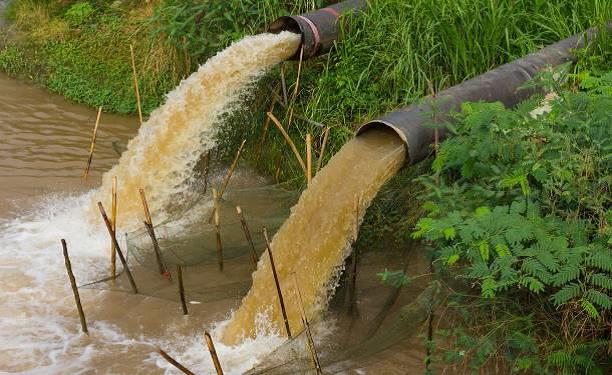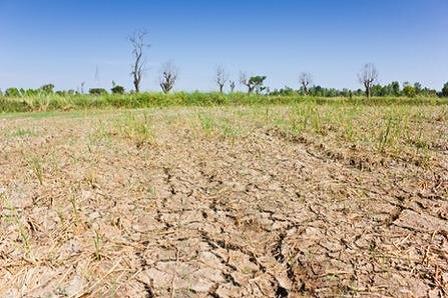Douglas Marowa, from
the different institute of the India. wrote a research article
about, Sustainable Solutions: Addressing E-Waste Pollution and Ensuring
Food Security. entitled, Need for sustainable solution: Environment, rural
agriculture and food security affected by electronic waste pollution of streams
and Sakubva River. This research paper published by the International
Journal of Agronomy and Agricultural Research (IJAAR). an open access
scholarly research journal on Agronomy, under the affiliation of the International
Network For Natural Sciences | INNSpub. an open access
multidisciplinary research journal publisher.
Abstract
Electronic waste is
currently the largest growing waste stream in the world. It is hazardous,
complex and expensive to treat in an environmentally sound manner.
Unsustainable electronic waste management of has led to pollution of rivers,
which has negatively affected the environment, agriculture activities and food
security. The research sought to investigate the waste management of electronic waste, its impact on environment, agriculture and food security in the rural
communities. To recommend sustainable waste management strategy for the country
and reduce the adverse effects on environment and agriculture to enhance food
security. Zimbabwe has become an electronic waste hazard as waste pile up at
backyard and in houses. A research survey was conducted in Mutare urban and
peri-urban rural communities involving a sample of 1250 participants revealed
that 29% of waste was electronic effluent, 29% of waste in backyard, 22% of
waste in storerooms. The peri-urban rural communities are heavily affected
downstream as the Sakubva River and its streams are polluted, either poisoned
or drying up. Methods of disposal were landfilling, burning, backyard and
storeroom storage. Food security as a state where the availability,
accessibility, utilization and stability of food are ensured and food
production is enough to cover the food demand of the people has been heavily
affected as water for gardening and field crop irrigation is polluted. It was
revealed that in some areas farmers have totally stopped gardening as the
source of water has dried up due to both soil and water pollution.
Read more : Fetal Fibronectin Test Accuracy for Predicting Preterm Birth Risk | InformativeBD
Introduction
The United Nations (2008) defines food security as a state where the availability, accessibility, utilization and stability of food are ensured and food production is enough to cover the food demand of the people. FAO (2010) reviewed that despite the fact that more than enough food was being produced per capita to adequately feed the global population, about 925 million people remained food insecure in 2010. Abalansa et al. (2021) indicated that electronic waste is a rapidly developing environmental problem particularly for the most developed countries that has negatively affected the sustainable agriculture practices for food security. Electronic waste are various forms of electric and electronic equipment that have ceased to be of value to their users or no longer satisfy their original purpose (Gill, 2021). The electronic waste products have exhausted their utility value through either redundancy, replacement, or breakage and this include both “white goods” such as refrigerators, washing machines, and microwaves and “brown goods” such as televisions, radios, computers, and cell phones (Gill, 2021). Electronic waste is considered the "fastest-growing waste stream in the world” (WEF, 2019) with 44.7 million tonnes generated in 2016- equivalent to 4500 Eiffel towers Balde et al. (2017). In 2018, an estimated 50 million tonnes of electronic waste was reported, thus the name ‘tsunami of electronic waste’ given by the United Nations (WEF, 2019). Its value is at least $62.5 billion annually (WEF, 2019).
The world currently has
a variety of environmental problems resulting from manufacturing activities,
including plastic pollution and electronic waste. Plastic pollution can be
traced back to the beginning of the commercial production of plastics in the
1950s (Barnes et al., 2009), but more recently, electronic waste is considered
an emerging environmental problem (Saldana-Duran et al., 2020). The sources of
the majority of these can be traced to major developed countries, although
there is an increasing contribution from rapidly developing countries like
China and India. The Basel Convention was formulated to ensure that
environmental problems are not exported across boundaries (Choksi, 2001;
Ogunseitan, 2013; Kummer, 1992). Developed countries have state-of-the-art
facilities, finances and technology to handle waste (Forti et al., 2020).
However, much of the electronic waste is not recycled but exported to
developing countries (Illes and Geeraerts, 2016), which are already struggling
with economic problems such as poverty. Many factors contribute to this surge
in electronic waste. These include the short lifecycle of equipment, low
recycling (Rabani and Thakur, 2020), and the continuous upgrading of electronic
equipment (Wang et al., 2019) as affluent societies demand the latest
technology. Electronic waste has been described as one of most difficult
classes of waste to manage due to a constant change in its features and
specificities (Borthakur and Singh, 2020). Recently, Zimbabwe has also been
become an electronic waste hazard as electronic equipment are piling up very
fast in company offices and in houses. Electronic scrap components, such as
central processing units, contain potentially harmful materials such as lead,
cadmium, beryllium, or brominated flame-retardants. Recycling and disposal of
electronic waste may involve significant risk to health of workers and their
communities (Sakar, 2016). According to the Basel Convention (1989) on the
Control of Transboundary Movements of Hazardous Wastes and Their Disposal of
1989, Art. 2(1), "'Wastes' are substance or objects, which are disposed of
or are intended to be disposed of or are required to be disposed of by the
provisions of national law" (Basel Convention, 1989). Under the Waste
Framework Directive 2008/98/EC, Art. 3(1), the European Union defines waste as
"an object the holder discards, intends to discard or is required to
discard."(EPC, 2008).
Reference
Abalansa, Samuel, Badr
El Mahrad, John Icely, Alice Newton. 2021. “Electronic Waste, an
Environmental Problem Exported to Developing Countries: The GOOD, the BAD and
the UGLY” Sustainability 13, no. 9, 5302. https://doi.org /10.3390/su13095302
Balde CP. 2017.
The Global E-waste Monitor 2017, UNU, ITU, ISWA, 2017
Barnes, DKA, Galgani F,
Thompson RC, Barlaz M. 2009. Accumulation and fragmentation of plastic
debris in global environments. Philos. Trans. R. Soc. B Biol. Sci. 2009 364, 1985-1998.
Basel Action Network
(BAN). 2011. Toxic trade news: “Cochin Port a safe conduit for
imported e-waste”; “Most aspects of e-waste not regulated in U.S., Va.”; “Research
identifies U.S electronic waste as likely source of toxic jewellery imports
from China”; “178 countries agree to allow the ban on exports of toxic wastes
to developing countries to become law.” Available: http://www.ban.org/
Basel Convention. 1989.
“Basel Convention.” “Basel
Convention Home Page”
Borthakur A. and Singh
P. 2020. Mapping the Emergence of Research Activities on E-Waste: A
Scientometric Analysis and an in-Depth Review; Elsevier: Amsterdam, The
Netherlands pp. 191-206.
Choksi S. 2001.The
Basel Convention on the control of transboundary movements of hazardous wastes
and their disposal: 1999 Protocol on Liability and Compensation. Ecol. Law
Q. 28, 509.
Dharini K, Bernadette
Cynthia J, Kamalambikai B, Arul Sudar Celestina JP, Muthu D. 2017.
Hazardous E-waste and its impact on soil structure. Earth and Environmental Science
80 (2017) 012057
Diaz L. 2006.
Solid Waste Management, Volume 2. UNEP/Earthprint, 2006.
Diss. 2019.
South-East Asia correspondent Kathryn 2019. “This
is the new dumping ground for the world’s high-tech trash”. ABC News.
Economist. 2009.
“Muck and brass: The waste business smells of money.” The Economist. 2009 02
28. pp. 10-12.
EMA. 2002.
Environmental Management Act Chapter 20, 27, Parliament of Zimbabwe
EPA. 2003.
“International Waste Activities.” (2003). U.S. Environmental Protection Agency.
EPC. 2008.“Directive 2008/98/EC of
the European Parliament and of the Council of 19 November 2008 on waste and
repealing certain Directives (Text with EEA relevance)”. europa.eu
FAO. 2010. The
State of Food Insecurity in the World (SOFI): Addressing food insecurity in
protracted crises. Rome.
Ferronato, Navarro,
Torretta, Vincenzo. 2019. “Waste
Mismanagement in Developing Countries: A Review of Global Issues”.
International Journal of Environmental Research and Public Health 16(6), 1060. doi:10.3390/ijerph16061060. PMC 6466021. PMID 30909625.
Forti V, Balde CP,
Kuehr R, Bel G. 2020. The Global E-Waste Monitor 2020: Quantities, Flows,
and the Circular Economy Potential; United Nations University: Tokyo, Japan,
2020;
Frazzoli Chiara,
Orisakwe Orish Ebere, Dragone Roberto, Mantovani Alberto. 2010.
“Diagnostic health risk assessment of electronic waste on the general
population in developing countries’ scenarios”. Environmental Impact Assessment
Review 30(6), 388-399. doi:10.1016/ j.eiar. 2009.
Gahukar RT. 2009.
Sustainable agriculture in India: Current situation and future needs.
Perspectives International Journal of Agricultural Sciences, Vol. 5 Issue 1,
January to May 2009: 1-7. FAO Technical Advisor (Retd.), Arag Biotech Pvt.
Ltd., Plot 220, Reshimbag, NAGPUR (M.S.) INDIA
Gill Gitanjali Nain. 2021.
“Electronic waste”. Encyclopedia Britannica, https://www.britannica
.com/ technology/electronic-waste.
Hamid El Bilali. 2019.
Research on agro-food sustainability transitions: where are food security and
nutrition? Food Security (2019) 11, 559-577: Published online: 16 May
2019 https://doi.org
/10.1007 /s12571-019-00922-1
Illes A, Geeraerts K. 2016.
Illegal Shipments of E-waste from the EU to China. In Fighting Environmental
Crime in Europe and Beyond; Springer Science and Business Media LLC:
Berlin/Heidelberg, Germany pp. 129-160.
Kirschbaum Miko UF. 2000. “Will changes in soil organic
carbon act as a positive or negative feedback on global warming?”.
Biogeochemistry 48(1), 21-51.
Kummer K. 1992.
The international regulation of transboundary traffic in hazardous wastes: The
1989 Basel Convention. Int. Comp. Law Q. 1992, 41, 530-562.
Mahipal Singh Sankhla,
Mayuri Kumari, Manisha Nandan, Shriyash Mohril, Gaurav Pratap Singh, Bhaskar
Chaturvedi, Dr Rajeev Kumar. 2016. Effect of Electronic waste on
Environmental and Human health- A Review. IOSR Journal of Environmental
Science, Toxicology and Food Technology (IOSR-JESTFT) e-ISSN: 2319-2402,p-
ISSN: 2319-2399 10(9), Ver. I (Sep. 2016), PP 98-104
Mihaela Kruzslicika. 2014.
Food security through sustainable agriculture: Agricultural Economics and Rural
Development, New Series, Year XI, no. 2, p. 195-202, 2014, Institute
of Agricultural Economics, Romanian Academy, Bucharest United Nations, (2008).
Organic Agriculture and Food Security in Africa. (UNCTAD/DITC/TED/2007/15),
2008, http://www.unep-unctad.org/cbt
Montrose P. 2011.
“Think before you shuffle”, News to Use (Wellcorps International). Available:
http://www.wellcorps.com/Think-Before-You-Shuff
Ogunseitan OA. 2013.
The Basel Convention and e-waste: Translation of scientific uncertainty to
protective policy. Lancet Glob. Health 1, e313-e314.
Rabani B, Thakur B. 2020.
Recycling Potential of E-Waste for Jammu City. Int. J. Progress. Res. Sci.
Eng 1, 29-32. Available online: https://journals.grdp ublications.
com /index.php/ijprse/article/view/98
Raghupathy L, Krüger C,
Chaturvedi A, Arora R, Henzler MP. 2010. E-waste recycling in India:
Bridging the gap between the informal and formal sector. Available: http://www.iswa.org/fileadmin
/galleries/General%20Assembly%20and%20WC%20 2010%2011%20Hamburg/Presentations/Krueger.pdf
Ray A. 2008.”Waste
management in developing Asia: Can trade and cooperation help?” The Journal of
Environment & Development 17(1), 3-25.
Robinson Brett H. 2009.
“E-waste: An assessment of global production and environmental impacts”.
Science of the Total Environment 408(2), 183-191. Bibcode:2009ScTEn.408..183R. doi:10.1016/ j.scitotenv.
2009.09.044. ISSN 0048-9697. PMID 19846207.
Sakar Anne. 2016. “Dad
brought home lead, kids got sick”. The Cincinnati Enquirer.
Saldana-Duran CE,
Bernache-Perez G, Ojeda-Benitez S, Cruz-Sotelo SE. 2020. Environmental
pollution of E-waste: Generation, collection, legislation, and recycling
practices in Mexico. In Handbook of Electronic Waste Management;
Butterworth-Heinemann: Oxford, UK pp. 421-442.
Smith T, Sonnenfeld DA,
Naguib Pellow D. 2006. Challenging the chip: Labor rights and
environmental justice in the global electronics industry (Philadelphia, PA,
Temple University Press).
Tsydenova O, Bengtsson
M. 2011. “Chemical hazards associated with treatment of waste electrical
and electronic equipment”, in Waste Management 31(1), pp. 45-58.
Wang B, Ren C, Dong X,
Zhang B, Wang Z. 2019. Determinants shaping willingness towards on-line
recycling behaviour: An empirical study of household e-waste recycling in
China. Resour. Conserv. Recycl 143, 218-225.
Wath Sushant B, Dutt
PS, Chakrabarti T. 2011. “E-waste scenario in India, its management
and implications” (PDF). Environmental Monitoring and Assessment 172(1-4), 249-262. doi:10.1007/s10661-010-1331-9. PMID 20151189. S2CID 8070711.
WEF. 2019. “A New
Circular Vision for Electronics, Time for a Global Reboot“. World Economic
Forum. 24 January 2019.
Widmer R, Oswald-Krapf
H, Sinha-Khetriwal D, Schnellmann M, Boni H. 2005. “Global perspectives on
e-waste”, in Environmental Impact Assessment Review 25(5), pp.436-458.
Wilson DC, Velis C,
Cheeseman C. 2006. “Role of informal sector recycling in waste management
in developing countries.” Habitat International 30, 797-808
Wolsink M. 1994.”Entanglement
of interests and motives: Assumptions behind the NIMBY-theory on Facility
Siting.” Urban Studies 31(6), 851-866.














%20in%20full.JPG)


0 comments:
Post a Comment